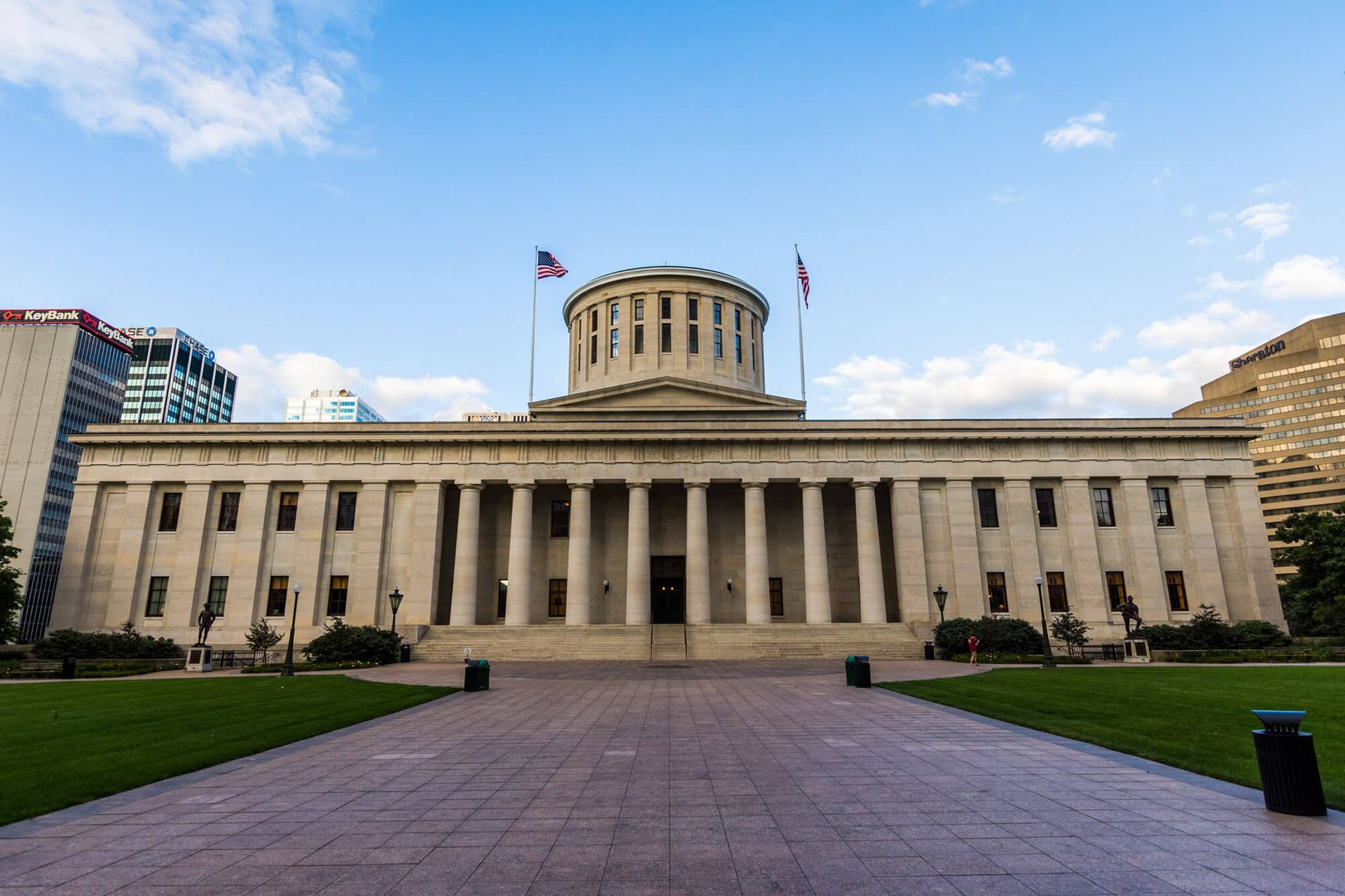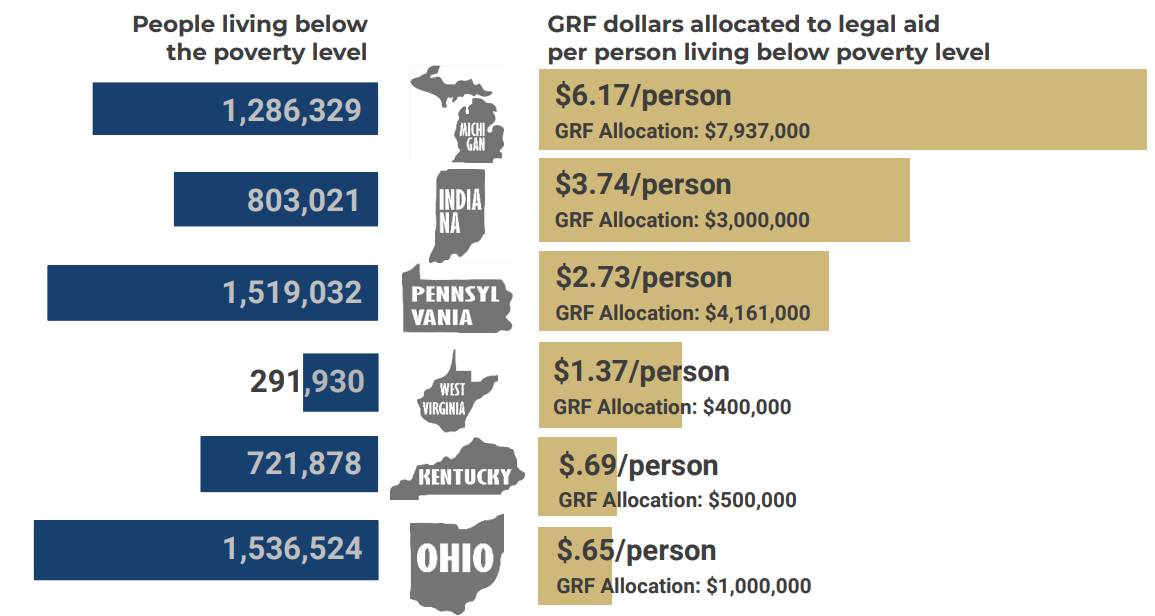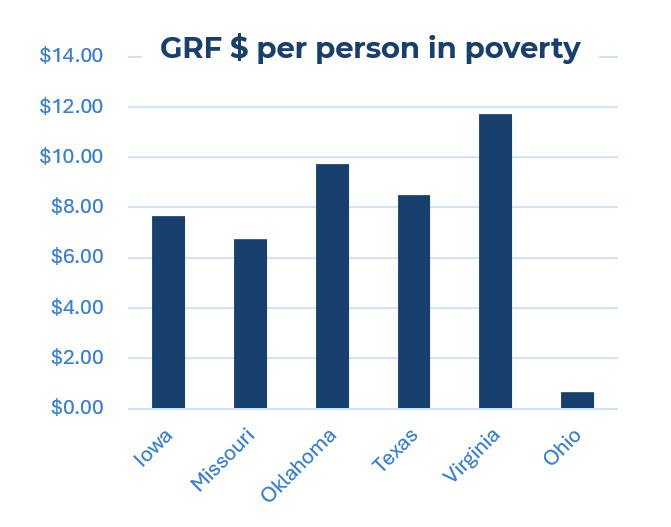Ohio Is Underfunding Legal Aid. That Could Change.
State lawmakers have an opportunity to increase legal aid funding in the 2026-2027 Biennial Budget.

According to Legal Services Corporation (LSC) data, Ohio’s poverty rate (13.4%) is the highest in the Midwest, with more people living in poverty in Ohio than in any other state in the Midwest or any of Ohio’s neighboring states.
One of the contributing factors to the poverty cycle is the disproportionate impact of the legal system. The LSC 2022 Justice Gap Study found that 74% of low-income households experienced one or more civil legal problems in the past year, while 39% experienced five or more compounding civil legal problems. But due to limited resources, legal aid organizations turn away one out of every two requests.
The inability to resolve one legal problem can trigger new legal problems all of which create barriers to those trying to build financial stability for themselves and their families. For example:
- The inability to pay a fine results in a driver’s license suspension, which results in the inability to maintain stable employment, housing, and food security.
- The inability to adjust to an unanticipated rent increase results in the loss of a home, which can lead to income instability for parents, education gaps for children, and increased family healthcare needs and costs.
This budget season, the Ohio State Legislature has the opportunity to help Ohioans interrupt the limiting cycle of unresolved civil legal issues by increasing funding for legal aid in the 2026-2027 Biennial Budget. If included in the budget, amendment HC1309 would allocate $10 million of general revenue funding for legal aid around the state.
Ohio is underfunding legal aid
Civil legal aid is a combination of services and resources that helps income-eligible Ohioans of all backgrounds – including children, veterans, seniors, ill or disabled people, and victims of domestic violence – effectively navigate the civil justice system. Legal aid helps people stabilize income and housing, protect against violence, avoid exploitation, and gain equitable access to education, public assistance, healthcare, and employment. In 2023, Alliance of Ohio Legal Aids member organizations provided free civil legal services to more than 135,000 Ohioans from all 88 Ohio counties.
Still, in proportion to its poverty population, each of Ohio’s neighboring states invests more general revenue funds (GRF) in legal aid than Ohio.

Other states around the country are taking even bolder measures to decrease the justice gap that keeps low-income families within the cycle of poverty.

An annual investment of $10 million would bring Ohio in line with Michigan and other states across the country investing to close the justice gap with a rate of $6.54 per person living below the poverty level.
Key legal system studies support increased resources for Legal Aid
In its 2024 Rural Practice Gap Taskforce Report, the Ohio State Bar Association found that “based on current data, a crisis is looming for rural Ohio if trends continue, where large swathes of the state will not have access to an attorney in their area.” The taskforce noted that “Legal aid continues to fill a critical need in our communities yet receives very little direct state support” and recommended “seeking additional public funding for legal aid, particularly from the state.”
In its 2024 report, the Supreme Court of Ohio Reentry Taskforce advised that “the Supreme Court should partner with Ohio’s legal assistance programs to engage volunteers to help meet the current needs of legal services of returning citizens, including exploring funding for legal clinics, expanding volunteer roles, securing funds for marketing reentry assistance, developing a statewide initiative for reinstatement clinics, and evaluating collateral consequences of criminal convictions.”
Investing in legal aid is investing in Ohio’s families, Ohio’s workforce, and Ohio’s future.
It's time for our state lawmakers to invest in services that will help the more than 1.5 million Ohioans living in poverty access quality housing, remove barriers to employment, and address other critical civil legal issues that limit financial stability. It's time to include a line item for legal aid in the budget.
Read Alliance testimony before the House Finance Committee in favor of adding a budget line item for Legal Aid.
